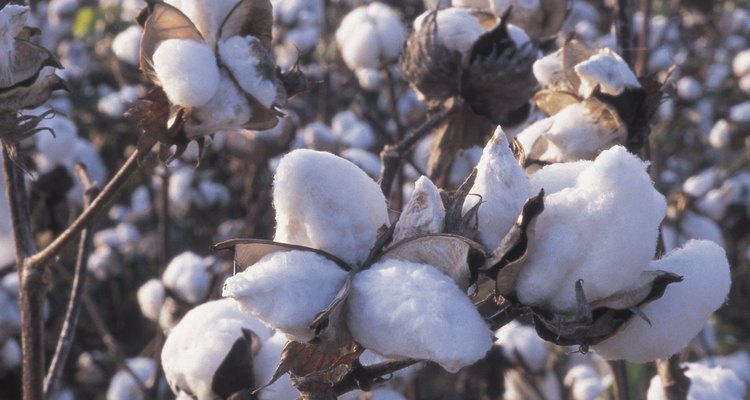
Mexico was one of the first places where cotton cloth was used — dating back to 5,000 B.C. In contemporary manufacturing, China and India are some of the world’s largest cotton producers, accounting for approximately 32.6 percent of the market in 2011, according to the article “India, China Set for Cotton Wars on Stubborn Yields.” The cotton making process includes harvesting the fiber and spinning the yarn before the fabric is made.
Harvesting Cotton
Cotton is typically planted in the autumn and harvested in the late spring in climates where the summers are long, hot and arid. There are many varieties of cotton, but some of the most popular for manufacturing are the Gossypium arboreum L. and Gossypium barbadense L. The white fluffy balls, referred to as “bolls,” grow in clusters and encase the plant’s seeds. During harvesting, each boll is picked by stripper harvester and spindle pickers, which are mower-like vehicles that sever and gather the cotton.
Fibers
After the cotton is harvested, the fibers are separated from dirt, debris and seeds in a process called ginning. There are two types of cotton gins commonly used for this process: roller and saw gin. The saw gin uses a circular blade to grab the cotton fibers and pull them through a mesh that is too small for debris to pass through. The roller gin uses a leather roller to pull the cotton through a blade that has narrow teeth for capturing the seeds and dirt. After ginning, the cotton fibers are compressed into bales.
Spinning Yarn
When cotton bales arrive at the spinning plant they are opened and separated by quality. The wads of cotton are put through a carding machine, which straightens them, allowing the fibers to lie parallel to one another. Afterwards, they are combed and bleached with hypochlorite or peroxide before the fibers are spun. Spinning machines operate by first condensing fibers together, rolling them onto a bobbin in one long strand. Then the strands are twisted into yarn.
Weaving Material
There are many ways to weave cotton yarns, but the two most common are the basic and twill weave. For basic weaving — which is a basket-like grid — rows of warp yarns are strung on the loom vertically, while a shuttle weaves the weft yarn through them horizontally. The twill weave is slightly more intricate, because it floats or passes the weft yarn over two or three warp yarns to create a diagonal pattern. Common basic weave fabrics include muslin and organdy, while popular cotton twills are denim and khaki.
Related Articles

How Is Wool Turned Into Fabric?
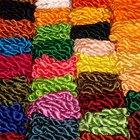
How Is Silk Made Into Fabric?
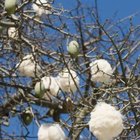
List of Plants Used for Clothing
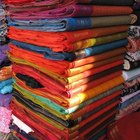
Information About Cotton Fabric

What Is the Difference Between Acrylic ...

Types of Cotton Fabric
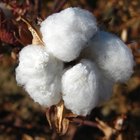
How Is Cotton Made Into Fabric?

How Much of the World's Clothing Is ...
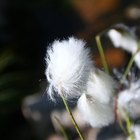
Define Cotton Silk Fabric

Why Cotton Is Used in Clothing

What Is the Difference Between Denim & ...
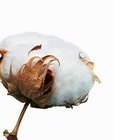
How Does Cotton Help Insulate?
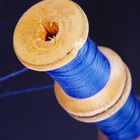
What Is a Synthetic Polyester Fabric?

How Is Poly Cotton Made?

Different Types of Flannel Fabrics
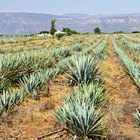
The Definition of Agave Fiber

Trade Names for Cotton

What Is Arnel Vintage Material Fabric?

Properties of Cotton Fabric
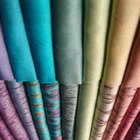
Fabrics That Haute Couture Designers Use
References
- “Inventing the Cotton Gin: Machine and Myth in Antebellum America”; Angela Lakwete; 2003
- “Cotton's Renaissance: A Study in Market Innovation”; Timothy C. Jacobson, George David Smith; 2001
Writer Bio
B. Maté has been reporting on creative industries since 2007—covering everything from Fashion Week to the latest artist to wow the Parisian art scene. Her experience stems from a marketing background, with more than 12 years of experience consulting fashion-forward entrepreneurs.
Photo Credits
Comstock/Comstock/Getty Images